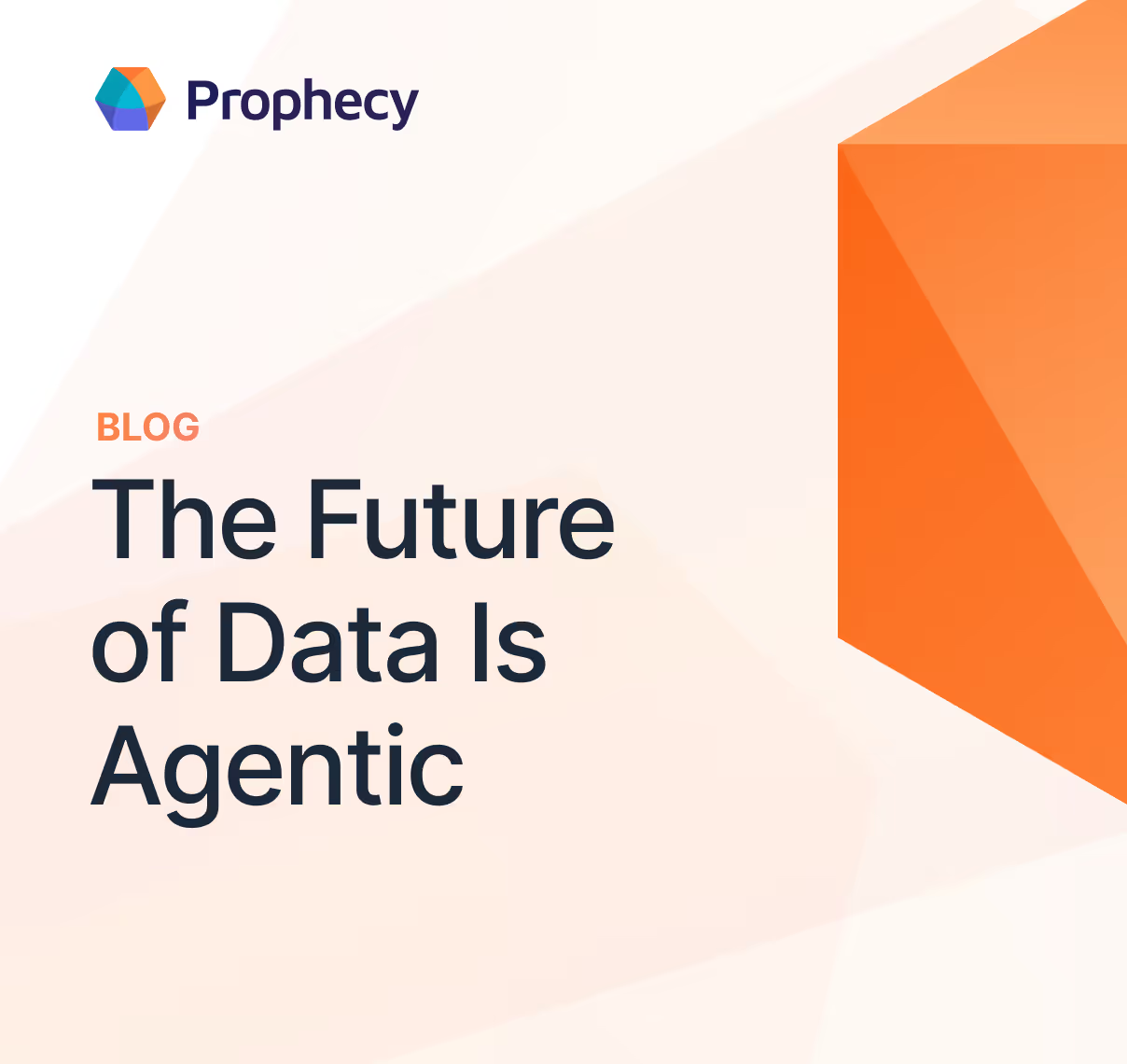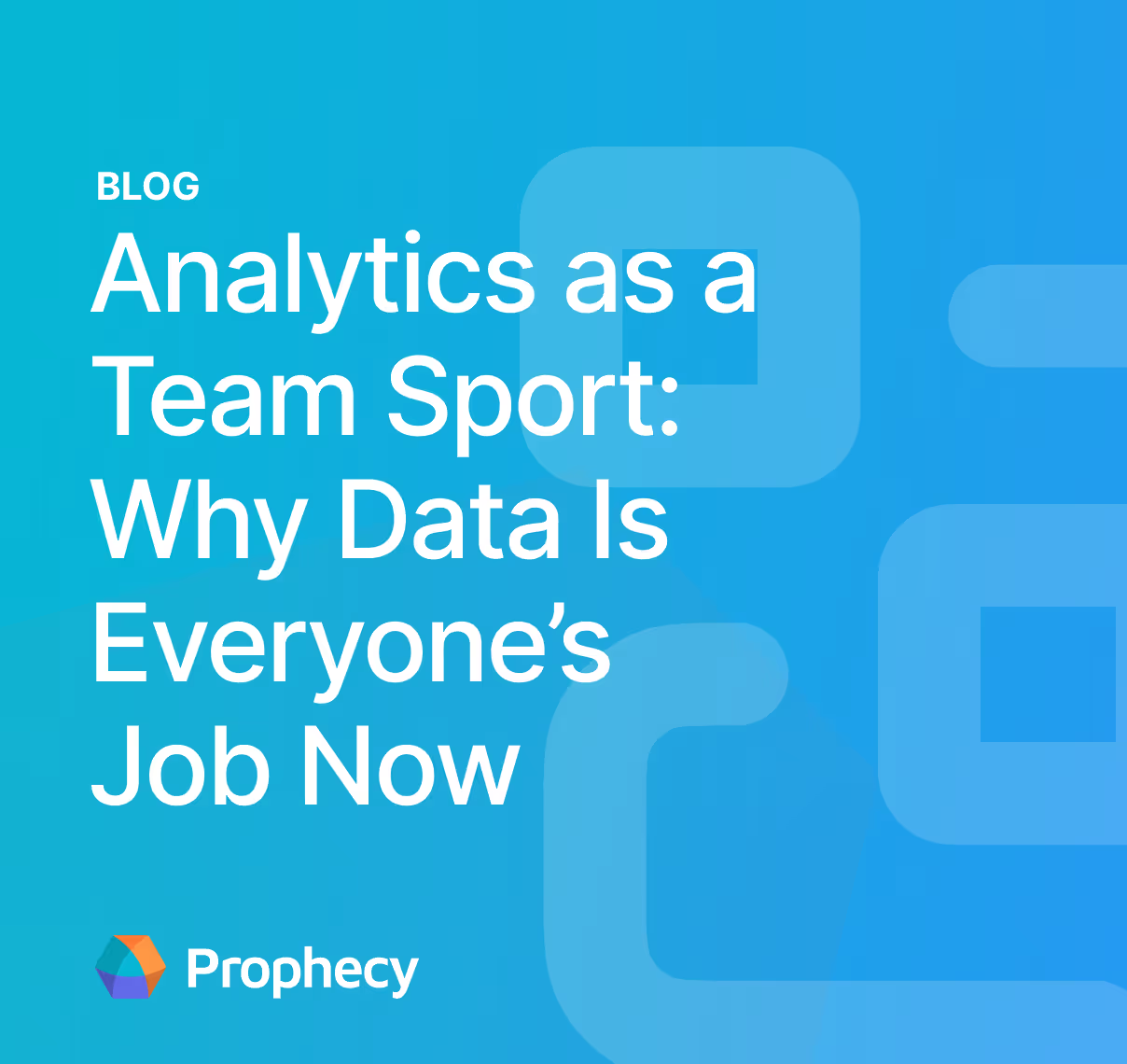How Analytics Leaders Can Implement Enterprise Data Reconciliation Without Breaking Systems
Discover how enterprise analytics leaders overcome data reconciliation challenges at scale.
Enterprise data leaders face a critical challenge: despite investing millions in data infrastructure, their organizations struggle with conflicting reports, delayed decisions, and eroding trust in analytics. The culprit? The lack of systematic data reconciliation across disparate sources.
When finance reports different revenue figures than sales, or when operational metrics contradict executive dashboards, the entire decision-making framework breaks down.
Let’s explore how forward-thinking analytics leaders build robust data reconciliation that transforms fragmented data chaos into reliable business intelligence.
What is data reconciliation?
Data reconciliation is the systematic process of identifying, analyzing, and resolving discrepancies between datasets from different sources to ensure accuracy and consistency across an organization's information ecosystem.
This critical data management practice helps address data cleansing challenges by verifying that information flowing from various systems—whether operational databases, external APIs, or third-party platforms—maintains integrity and alignment when combined for analysis and reporting.
At its core, data reconciliation addresses the fundamental challenge facing modern enterprises: multiple systems of record creating conflicting versions of supposedly identical information.
When customer data from CRM systems doesn't match billing records, or when financial reports show different totals than operational dashboards, reconciliation processes investigate these discrepancies and establish authoritative, trustworthy datasets.
The practice extends beyond simple data comparison to encompass business rule validation, temporal alignment, and contextual interpretation of differences. Effective reconciliation considers timing variations, system-specific formatting, and legitimate business reasons for apparent discrepancies while flagging genuine data quality issues that require intervention.
For analytics leaders, data reconciliation represents both a technical necessity and a strategic capability. Organizations with mature reconciliation processes reap data auditing benefits, make faster decisions, reduce compliance risks, and build stakeholder confidence in their data-driven insights.
Data reconciliation vs. data validation
While often confused, data reconciliation and data validation serve distinct but complementary purposes in enterprise data management:
- Data validation: Focuses on ensuring individual datasets meet predefined quality standards and business rules. Validation processes check for completeness, format compliance, and logical consistency within single data sources. These automated checks verify that dates fall within acceptable ranges, required fields contain values, and data types match expected formats.
- Data reconciliation: Concentrates on identifying and resolving discrepancies between multiple data sources that should theoretically contain the same information. Reconciliation processes compare datasets from different systems to uncover variations, investigate root causes, and establish which version represents the authoritative truth for business decisions.
The relationship between these processes creates a comprehensive data quality framework. Validation ensures that each data source meets minimum quality thresholds through data quality checks before entering reconciliation workflows.
In contrast, reconciliation addresses the complex challenge of managing multiple validated sources that may still contain legitimate differences due to timing, scope, or variations in business processes.
Applications and use cases of data reconciliation
Data reconciliation addresses critical business challenges across virtually every industry and functional area, with applications ranging from routine operational tasks to strategic enterprise initiatives.
- Financial consolidation and reporting: Organizations reconcile general ledger data across subsidiaries, divisions, and accounting systems to produce accurate consolidated financial statements. This process ensures that intercompany transactions are eliminated properly and that financial metrics remain consistent across all reporting levels and timeframes.
- Customer data harmonization: Enterprises reconcile customer information from CRM systems, e-commerce platforms, billing databases, and support systems to create unified customer profiles. This reconciliation enables personalized marketing, accurate customer lifetime value calculations, and consistent customer service experiences across all touchpoints.
- Inventory and supply chain alignment: Companies reconcile inventory counts between warehouse management systems, ERP platforms, and point-of-sale systems to maintain accurate stock levels. This process prevents stockouts, reduces excess inventory, and ensures that demand planning operates on reliable inventory data across the entire supply chain.
- Multi-source analytics and business intelligence: Organizations reconcile data from operational systems, external data providers, and analytical platforms using effective data integration strategies to create trustworthy datasets for reporting and analysis. This reconciliation ensures that executive dashboards, departmental reports, and analytical models all operate on consistent, accurate information.
- Regulatory compliance and audit preparation: Enterprises reconcile transaction data across multiple systems to meet regulatory requirements and prepare for audits. This process demonstrates data integrity, identifies potential compliance issues, and provides auditors with confidence in the organization's information management practices.
The benefits of data reconciliation extend beyond immediate accuracy improvements to create strategic advantages for forward-thinking organizations. Companies with mature reconciliation capabilities respond faster to market changes, maintain stronger stakeholder relationships, and build competitive advantages through superior information management.
Six steps to solve enterprise data reconciliation challenges
Modern enterprises face increasingly complex reconciliation challenges that require systematic solutions addressing both technical complexity and organizational dynamics. These proven steps directly tackle the most critical obstacles analytics leaders encounter when scaling reconciliation across enterprise environments.
Build source hierarchies that eliminate integration chaos
Enterprise reconciliation efforts often collapse under the weight of system complexity, where dozens of databases, applications, and platforms must maintain consistency without standardized interfaces or common data formats.
Each new system introduces unique data structures, timing patterns, and business logic that exponentially complicate reconciliation efforts, creating integration gridlock.
Legacy systems exacerbate this challenge by operating on outdated technologies that actively resist modern integration approaches, making ETL modernization a necessity. These platforms typically lack APIs, use proprietary data formats, or operate on entirely different update schedules.
The solution lies in creating definitive source-of-truth hierarchies that eliminate decision paralysis. Map your organization's critical data domains and identify the primary systems responsible for each type of information. Customer data might originate in CRM systems while financial transactions flow from ERP platforms.
Document these relationships explicitly, including the business rationale and circumstances under which authority transfers between systems. Implement time-based rules accounting for data latency and update frequencies, ensuring point-of-sale systems are authoritative for current transactions. In contrast, data warehouses become authoritative for historical analysis after processing.
Synchronize timing that resolves data freshness conflicts
Reconciliation initiatives frequently generate false alarms and stakeholder frustration when systems operate on different update schedules. This creates temporary discrepancies that appear as data quality issues but are timing artifacts.
Real-time transaction systems, nightly batch processes, and weekly data warehouse refreshes create a complex temporal landscape where identical information appears inconsistent simply because updates haven't propagated across all systems.
These timing misalignments undermine confidence in reconciliation processes when stakeholders receive alerts about discrepancies that resolve automatically within hours or days. Business users quickly lose trust in reconciliation systems that consistently flag non-issues, leading to alert fatigue that causes genuine problems to be ignored or dismissed.
Legacy ETL processes compound this challenge by introducing unpredictable processing delays that vary based on data volumes, system performance, or processing queue backlogs. Organizations struggle to predict when data will be current across different systems, making it impossible to establish reliable reconciliation windows.
Implement temporal synchronization frameworks that account for known update patterns and processing delays across your system ecosystem. Create reconciliation windows aligned with natural data refresh cycles, ensuring comparisons occur when all relevant systems have completed their update processes.
Build buffer periods that accommodate normal processing variations while flagging unusual delays that might indicate system problems. Establish different reconciliation schedules for different data types based on business criticality and natural update frequencies, preventing timing artifacts from masquerading as data quality issues.
Deploy smart logic that wins stakeholder buy-in
Reconciliation projects frequently encounter fierce organizational resistance when stakeholders perceive data standardization efforts as direct threats to their autonomy or uncomfortable exposures of long-hidden data quality problems.
Business units typically resist requirements that expose inconsistencies in established processes, particularly when discrepancies have been managed through comfortable manual workarounds for years.
Technical teams sometimes oppose initiatives that require additional system modifications or ongoing maintenance responsibilities, especially when they're already overwhelmed by project backlogs and limited resources. The perceived complexity triggers pushback from teams concerned about scope creep and technical feasibility.
Breaking through this resistance requires intelligent automated comparison logic that incorporates business context, distinguishing genuine discrepancies from acceptable variations.
Develop algorithms that account for legitimate business differences, such as currency conversions, tax calculations, and promotional adjustments, without indicating quality problems. Incorporate temporal sensitivity, recognizing how data ages and transforms through business processes.
Build business rule engines applying organization-specific logic during processing, accounting for company policies and regulatory requirements. This approach demonstrates clear value propositions for each stakeholder group rather than imposing additional burdens.
Create monitoring that prevents performance disasters
As reconciliation processes scale to handle massive data volumes and increasingly complex comparison logic, performance degradation transforms efficient operations into critical bottlenecks that delay essential business processes and compromise reporting reliability across the enterprise.
Traditional approaches, depending on sequential processing, simply cannot keep pace with modern data volumes and velocity requirements. Network latency emerges as a significant constraint when reconciliation processes must access data across geographically distributed systems or multi-cloud environments.
Memory and processing limitations severely restrict the complexity of reconciliation logic that can be applied within acceptable timeframes, making it impossible to implement sophisticated business rules within performance parameters that support real-time decision-making.
Real-time monitoring transforms reconciliation from reactive problem-solving into strategic business capability, preventing issues before operational impact. Implement continuous comparison processes, identifying discrepancies as they develop rather than waiting for scheduled runs.
Create alerting systems that notify relevant stakeholders when metrics exceed acceptable thresholds, distinguishing between routine variations that require attention and critical discrepancies that demand immediate intervention.
Build trend analysis capabilities identifying patterns in results over time, enabling proactive intervention before system performance degradation affects business operations.
Automate exceptions that resolve data lineage black holes
Enterprise reconciliation efforts frequently fail because organizations face data lineage challenges, lacking comprehensive visibility into how data flows through complex system ecosystems.
When reconciliation processes identify discrepancies, investigation typically requires time-consuming manual tracing through multiple systems to understand data transformations and business logic that might explain apparent inconsistencies.
Without automated lineage tracking capabilities and understanding the importance of data catalogs, investigations consume substantial time while often missing subtle factors that significantly impact data accuracy and reconciliation results.
Business stakeholders desperately need lineage visibility to understand how operational decisions affect downstream data quality and reconciliation outcomes.
Automated exception management separates mature reconciliation programs from basic comparison activities. Develop classification systems distinguishing acceptable variations from genuine quality issues, automatically resolving timing differences and rounding variations without human intervention.
Create stakeholder routing logic directing exceptions to individuals best positioned for quick, accurate resolution. Financial discrepancies route to accounting teams, while customer variations flow to data stewardship groups.
Build feedback loops capturing resolution patterns and business rules identified during handling, creating comprehensive data flow visibility that eliminates lineage black holes.
Build governance that conquers compliance chaos
Global enterprises face increasingly complex regulatory requirements that significantly impact how data reconciliation must be designed, implemented, documented, and audited across various jurisdictions and industry frameworks.
Data privacy regulations create significant challenges when personal information must be reconciled across systems while maintaining appropriate protection levels that vary dramatically between jurisdictions.
Industry-specific compliance frameworks often mandate particular reconciliation procedures and documentation standards that directly conflict with efficient technical implementation approaches.
Audit requirements vary substantially across jurisdictions, creating documentation and process standardization challenges when organizations operate in multiple regulatory environments simultaneously.
Sustainable reconciliation requires governance structures balancing automation with human oversight while scaling efficiently as organizational complexity increases. Establish clear roles and responsibilities across technical and business teams, with data engineers managing automated processing while business analysts handle complex resolution and rule definition.
Implement change management processes, ensuring reconciliation logic remains aligned with evolving business requirements. Create performance measurement systems tracking effectiveness from technical and business perspectives, measuring processing efficiency alongside decision-making confidence improvements.
Build compliance capabilities demonstrating reconciliation integrity for audit and regulatory requirements, embedding regulatory requirements directly into the reconciliation platform architecture rather than treating compliance as a separate consideration.
Eliminate reconciliation bottlenecks with unified governance
Data reconciliation represents a strategic imperative that distinguishes forward-thinking organizations from their competitors. The organizations that excel at reconciliation implement unified platforms that balance automation with business intelligence, providing analytics leaders with the confidence to make critical decisions based on accurate, consistent information.
Rather than treating reconciliation as a technical afterthought, these enterprises recognize it as a fundamental capability that enables data-driven transformation.
Here's how Prophecy empowers analytics leaders to build enterprise-grade reconciliation capabilities:
- Unified data integration platform that connects to diverse enterprise systems through pre-built connectors and extensible frameworks, eliminating the complexity of managing multiple point-to-point reconciliation processes
- Intelligent exception handling with automated classification, stakeholder routing, and escalation management that reduces manual investigation time while maintaining accuracy and business context
- Real-time monitoring and alerting capabilities that identify discrepancies as they develop, enabling proactive resolution before issues impact business operations or decision-making processes
- Built-in governance frameworks that ensure reconciliation processes meet regulatory requirements while providing comprehensive audit trails and compliance reporting across multiple jurisdictions
- Visual development environment that enables business analysts to participate directly in reconciliation rule development and exception handling without requiring extensive technical expertise
- Enterprise-scale performance through distributed processing architectures that handle massive data volumes and complex comparison logic without creating operational bottlenecks
To transform your organization's approach to data consistency and build the reconciliation capabilities that analytics leaders need, explore Self-Service Data Preparation Without the Risk and discover how to implement enterprise-grade reconciliation that balances automation with governance.
Ready to give Prophecy a try?
You can create a free account and get full access to all features for 21 days. No credit card needed. Want more of a guided experience? Request a demo and we’ll walk you through how Prophecy can empower your entire data team with low-code ETL today.
Ready to see Prophecy in action?
Request a demo and we’ll walk you through how Prophecy’s AI-powered visual data pipelines and high-quality open source code empowers everyone to speed data transformation
Get started with the Low-code Data Transformation Platform
Meet with us at Gartner Data & Analytics Summit in Orlando March 11-13th. Schedule a live 1:1 demo at booth #600 with our team of low-code experts. Request a demo here.
Related content
A generative AI platform for private enterprise data
Introducing Prophecy Generative AI Platform and Data Copilot
Ready to start a free trial?
Lastest posts

The Future of Data Is Agentic: Key Insights from Our CDO Magazine Webinar

Analytics as a Team Sport: Why Data Is Everyone’s Job Now




